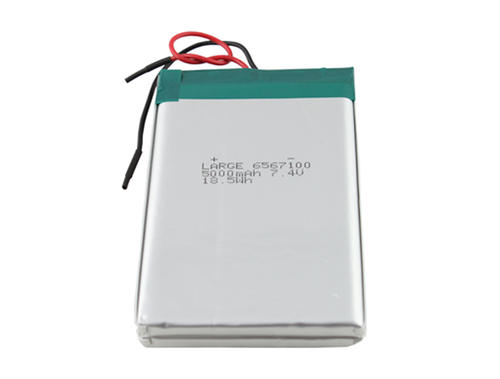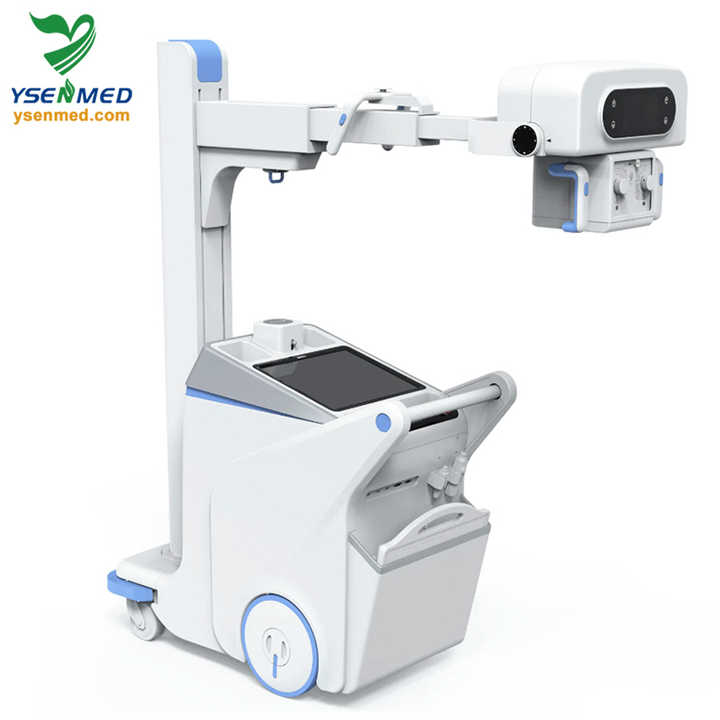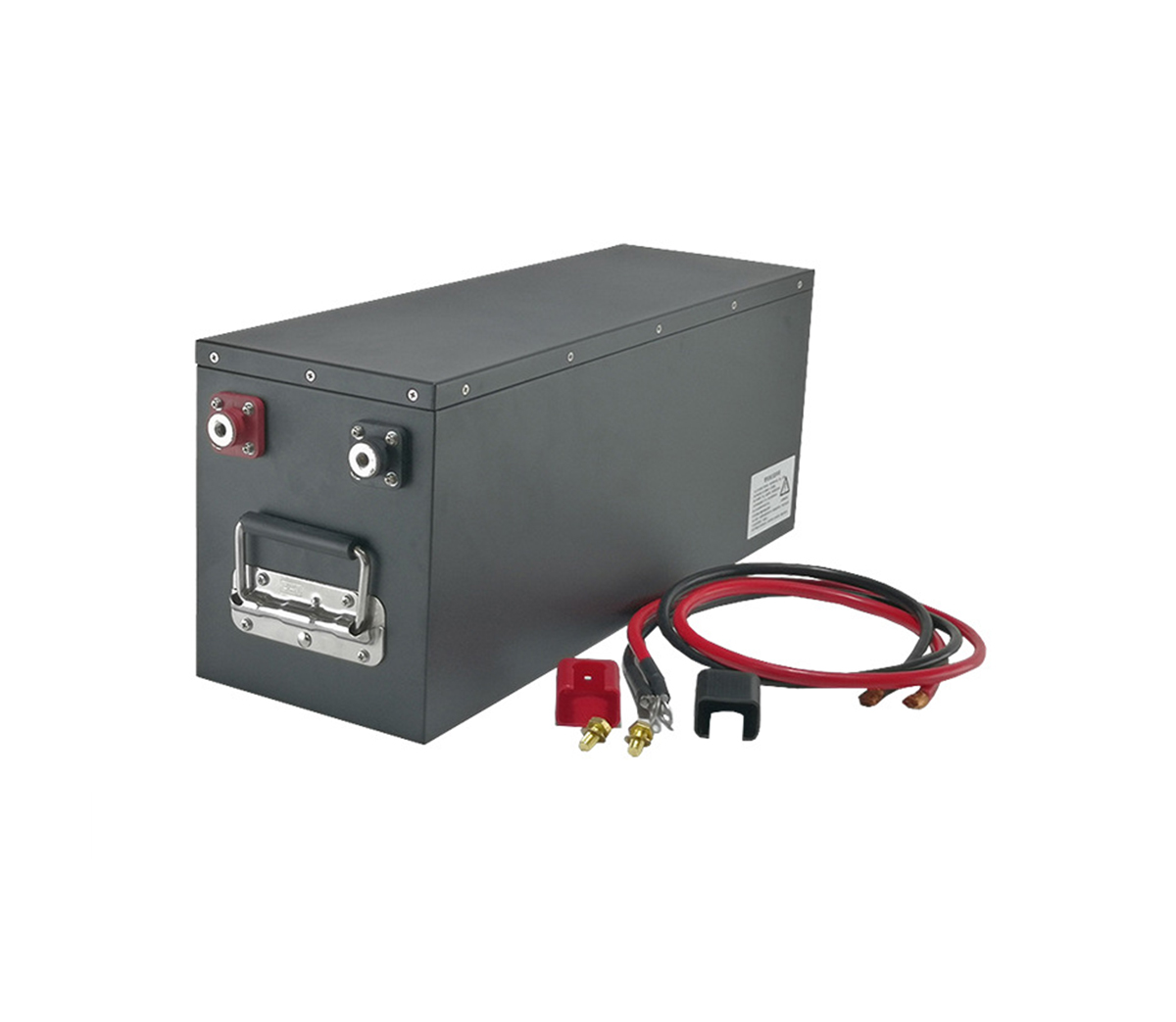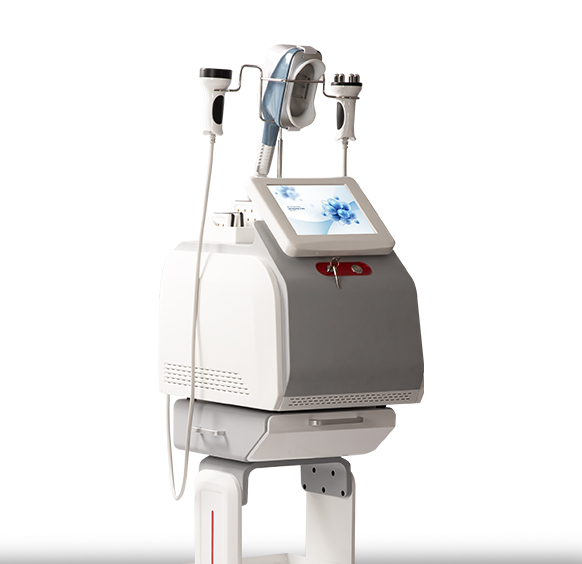
In the production process of polymer lithium ion batteries, the following
factors must be paid attention to. The produced polymer lithium-ion battery is
packaged and then formed. The conditions of formation are more critical, because
it involves the formation of SEI film to prevent the negative electrode from
spontaneously reacting with the electrolyte; at the same time, it can also make
good contact between the active material and the electrolyte. Generally
speaking, each manufacturer has its own formation conditions
polymer lithium ion battery/raw materials
1 For the negative electrode, in addition to using a polymer soluble in an
organic solvent as a binder, a polymer soluble in an aqueous solution can also
be used as a binder. A schematic diagram of the structure of a water-soluble
binder poly(acrylamide-co-diallyldimethylammonium chloride) (AMAC). Compared
with polyvinylidene fluoride, it has certain advantages, which is conducive to
the formation of a more conductive SEI film on the surface of the negative
electrode, and the permeability of the organic electrolyte is better.
2 Although the dispersion of the conductive agent is not an important
aspect, it cannot be ignored. The effect of the dispersion of the conductive
agent on the negative electrode material has been described above, and it also
plays the same role for the positive electrode material, affecting the
performance of the positive electrode capacity and the rate performance of the
battery. For example, for LiMn2O4, the use of a new type of process can ensure
uniform dispersion of the conductive agent, low polarization, high capacity, and
good rate performance than the traditional process. The relationship between the
capacity and discharge rate of LiMn2O4 positive pole pieces prepared by
different processes.
3 The ratio of positive electrode and negative electrode is also different
for different raw materials. For example, for natural graphite //LiFePO4, the
capacity of the latter should be equal to the sum of the capacity of natural
graphite and the charge required for SEI film formation. In addition, the
thickness of the electrode has different requirements according to different
materials.
4 The current commercial polymer lithium ion batteries basically still use
LiFP6 carbonate solution as a plasticizer. At a higher temperature (80~100℃), it
will decompose under the triggering of trace moisture or alcohol, and produce
Some toxic alkyl fluorinated phosphates. This thermal decomposition is
suppressed by the action of the Lewis acid or the composite oxide of lithium and
metal.
5 During the formation and cycling of polymer lithium-ion batteries,
swelling and other phenomena may also occur. In the case of lithium cobalt oxide
as the positive electrode, the phenomenon of swelling mainly occurs below 4V,
which is caused by the reduction of the electrolyte. Of course, when it is in a
charged state, the positive electrode is in a high valence state and gas is also
generated. The swelling phenomenon of lithium cobalt oxide is significantly
lower than that of LiNi0.8Mn0.1Co0.1O2. The latter begins to bloat above 32V.
Therefore, for certain users, it is necessary to avoid bloating. This is a major
indicator when selecting materials.
Precautions
During the formation process, the composition of the electrolyte has a
significant effect on the swelling of the battery. For example, in the swelling
based gel electrolyte of lithium-ion batteries assembled with different cathode
materials of PVDF at 90℃ for 4 hours under different charging conditions, using
1mol/LLiClO4 EC/PC electrolyte, about 60% of the electrode surface is present.
The gas phase leads to the separation between the active particles of the
negative electrode and the destruction of the structure; and the
EC/愣∧邗サ缃庖海蛑扟黾滾滾? 3% of 1mol/LLiBF4. Therefore, the shelf time after chemical
conversion is related to the composition of the electrolyte. Some specific
instructions about the formation. After formation, pick out the short-circuited
battery, store it for a period of time, and then measure it. If the voltage
decays quickly, the battery itself is also short-circuited and must be treated
as a waste product to prevent it from entering the market and causing safety
problems. After these steps, the buyer inspects the goods and then packs them
out of the factory.
Battery maintenance common sense:
1 A common phenomenon on Ni-MH rechargeable batteries with memory effect.
The specific performance is: if you start using the battery without being fully
charged for a long time, the battery's power will drop significantly, even if
you want to fully charge in the future, you will be dissatisfied. Therefore, the
important way to maintain Ni-MH batteries is: the battery must be used up to
start charging, and the battery is fully charged before it can be put into use.
The memory effect of commonly used lithium batteries is negligible. 2Full
charge, full discharge is for lithium batteries. Complete discharge refers to
the process of adjusting the power consumption of smart devices, such as mobile
phones, to the lowest power state until the mobile phone automatically shuts
down.
Full charge refers to the process of connecting a fully discharged smart
device, such as a mobile phone, to the charger until the phone prompts
"full".
3 Overdischarge is for lithium batteries.
There will be a small amount of power inside the lithium battery after it
is completely discharged, but this part of the power is very important to the
activity and life of the lithium battery. Over-discharge: After a complete
discharge, if you continue to use other methods, such as forcibly turning on the
mobile phone again, and connecting the battery to a small light bulb to consume
residual power, this is called over-discharge and will cause irreversible damage
to the lithium battery.
4 Protection chip Lithium batteries have very strict requirements on the
current and voltage when charging and discharging. In order to protect the
battery from damage due to abnormal external electrical environment, a chip that
manages the battery status is installed inside the battery body. This chip also
has the function of recording battery capacity and correcting battery capacity.
Now, even if it is a counterfeit mobile phone battery, this key protection chip
will not be saved, otherwise the counterfeit mobile phone battery cannot be used
for a long time.
5 Overshoot and overdischarge protection circuit The integrated battery
management chip and circuit built into smart devices.
For example, there is such a circuit on a mobile phone, and its functions
are as follows:webcam factory
6 When charging, provide the most suitable voltage and current to the
battery. Stop charging at the right time.
7 When charging, always check the remaining battery power and order the
phone to shut down at an appropriate time to prevent over-discharge.
8 When starting up, check whether the battery has been completely
discharged, if it has been completely discharged, prompt the user to charge, and
then shut down.
9 Avoid abnormal battery or charging line power, disconnect the circuit
when an abnormality is found to protect the phone.
10 Overcharge: It is for lithium batteries.
Under normal circumstances, when a lithium battery is charged to a certain
voltage (that is, it is fully charged), the charging current will be cut off by
the upper-level circuit, but due to the different voltage and current parameters
of the built-in overshoot and overdischarge protection circuit in some devices
(such as mobile phone battery holder charging), This leads to a phenomenon that
although it is fully charged, the charging has not stopped. Overcharging can
also cause damage to battery performance.
11 activated lithium battery is not used for a long time (more than three
months), it will produce electrode material passivation, battery performance
decline, you can use three full charge and full discharge to release the
purification, to give play to the highest performance of the battery.
2. Common misconceptions:
1 First use must be fully discharged, and then fully charged, repeat three
times in order to activate the battery. Otherwise the battery will never be
useful!!
Answer: If you have nothing to do in your spare time, you can do this, but
it is not necessary, because the activation operation does not have to be done
the first time you use it. As long as it is continuously used, the electrode
passivation can slowly disappear without deliberate activation.
2Do not use the mobile phone when charging, it is harmful to the battery,
and it will also produce a large amount of radiation to harm the human body.
Answer: Whether using a mobile phone while charging is harmful to the
battery depends on the situation (explained later in this article), but one
thing is certain is that using a mobile phone during charging will never produce
more radiation than usual. Lithium battery can only be charged and discharged
XXX times during its life cycle, so try to use automatic shutdown every time you
use it, and try to fully charge it every time you charge it.
The first clause is correct, and the following is wrong.
Each time in this number of times refers to a complete one, such as
charging from 20% to 30% and stopping charging, this is only 1/10 times, and
from 80% to 60% discharge, it can only be regarded as 1/5 times.
The first three charging must reach 12 hours, otherwise it will affect the
battery performance.
If it is to activate the battery, it is enough to prompt the phone to be
fully charged. Normally, the phone will prompt to be fully charged within 5
hours. If you continue to connect the charger after completion, the overshoot
and overdischarge protection circuit will cut off the charging current of the
phone. After that, the battery is in an inactive state, and the effect is the
same as removing the charging cable immediately after being fully charged.
The first three charging must reach 12 hours is for Ni-MH rechargeable
batteries. As a result, many manufacturers have habitually and ignorantly
written in the lithium battery user manual. It is terrible to have no culture.
International manufacturers such as Dell, Lenovo, Asus, and Apple will never
show the words "12 hours" on their products. And for lithium batteries, this is
a commonality and part of the principle. It is impossible for some manufacturers
to produce it in 12 hours, and some manufacturers do not need it.
It should be noted that if you use a cradle charger, since most of the
cradle chargers cannot reach the maximum current of the official line charger,
the charging time may exceed 6 hours, but as long as it is fully charged, the
seat charger will automatically cut off the power and use the cable. Charging is
the same.
It is best to disconnect the charging cable immediately after it is fully
charged to prevent overcharging.
The overshoot and overdischarge protection circuit is not vegetarian, OK!!!
If overcharge occurs, it is mostly because the overshoot and overdischarge
protection circuit is damaged, but in terms of current electronic product
technology and pressure resistance, this probability is really low. , Don't
worry about it.
Once the mobile phone starts to prompt the user to charge, it must be
charged immediately or turned off immediately to avoid over-discharge. The
overshoot and overdischarge protection circuit is not vegetarian, OK!!! This
circuit will be forced to shut down when necessary (that is, before
overdischarge) without damaging the battery. The reminder of the mobile phone is
to let the user know in advance, so as to deal with or psychologically prepare
in advance.
It should be noted that if the mobile phone has been automatically turned
off, it must not be forced to turn on for the purpose of making a call, because
it is likely to cause overdischarge, and due to the existence of protection, it
will probably be overcharged before the power on is completed. The overdischarge
protection circuit Power off forcibly.
Three, use correctly
1 Newly manufactured batteries: without any treatment, such as activation,
etc., they can be directly put into normal use. 2 Batteries that have not been
idle for a long time (within three months): Without any treatment (such as
activation, etc.), they can be directly put into normal use.
3 batteries for a long time (more than three months): can be activated to
maximize the battery activity, or not, so that it will naturally return to the
highest activity with normal use.
4 sub-product evaluation personnel, in order to ensure the correct
statistics of battery life, it is necessary to activate processing before
testing.
5 Normal charging method of lithium battery:
Charge at any time and stop charging at any time, don’t hesitate. This is
an important advantage of lithium batteries-no memory effect. Please face up to
this advantage and let your lithium battery exhibit this important advantage as
much as possible.
Fourth, what is the most afraid of lithium batteries at work
High temperatures above 1.100°C will seriously affect the battery life and
storage capacity, and may cause the battery to melt or explode. Therefore,
please keep the lithium battery away from fire and other heat sources.
2.35℃ to 100℃ high temperature Yes, you read it right, starting from 35℃
(human body temperature is generally 36.2℃-37.2℃) battery life will be obviously
affected by temperature. The higher the temperature, the greater the impact.
The design life of a lithium battery is at least 400 full charge and
discharge cycles. If the mobile phone is charged once every three days, a
battery should last at least three and a half years. But most of the batteries
do not last that long. A large part of the reason is that the battery is
affected by the human body temperature, and the other part is due to the heating
of other chips in the mobile phone. Why does the laptop battery always feel
less durable than a mobile phone? That is because: First, the laptop heats up
more than the mobile phone, and the heat of the computer chip is easily
conducted to the battery, which is light and relaxed when it exceeds 40°C.
Second, in order to charge faster, the notebook charging current is generally
high, the battery capacity is large, and the charging and discharging battery
itself will also generate heat. Third, the battery is generally located on the
lower panel, and it is not easy to dissipate heat.
Furthermore, if your device generates more heat during use, such as
long-term phone calls, mobile phone playing large-scale games, notebook computer
playing games, and this heat will be conducted to the battery, plus the
battery's own heat during charging , Although there is no safety risk, it will
also affect the battery.
Therefore, if you find that the charging device is heating up significantly
(such as an iPhone while charging and playing 3D games), you can consider
waiting for it to be fully charged before playing with the charging cable.
3. The temperature below -40℃ will reach the freezing point and freeze
completely.
4.10°C to -40°C low temperature will reduce battery life, but will not
cause permanent damage to the battery. As long as the temperature returns to
room temperature, the power will automatically recover.
5. What is the most afraid of the idle lithium battery:
High temperature above 1.35℃, same as medium lithium battery.
2. Idle after being fully charged, the battery will age faster than
usual.
3. If the battery is left unused after a minute discharge, the battery will
self-discharge during the idle process, and self-discharge of the battery after
full discharge will cause over-discharge.
4. When the temperature is below -40℃, it will freeze to the freezing point
completely.
5. Ideal state of lithium battery:
The ambient temperature of the idle lithium battery is around 20°C (almost
indoor temperature). At this time, the battery discharge and charge performance
can be maximized. If you want to idle the battery for a long time (more than
three months), please charge it to about 40% before leaving it idle (for a short
time, the key is trouble). Because of this, when the battery leaves the factory,
the battery factory basically charges to 40% before leaving the factory.
The lower the temperature of the idle battery, the slower the aging, but it
should not be lower than -40°C.



































